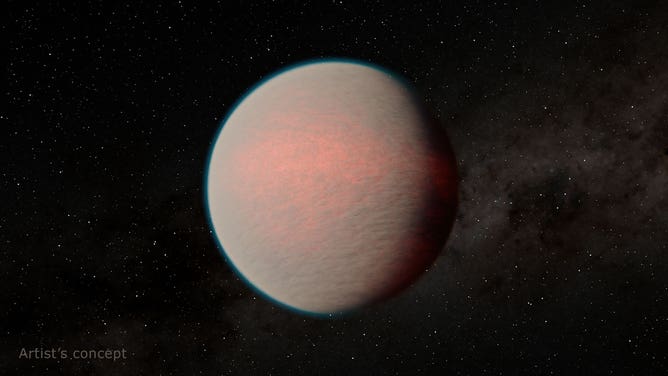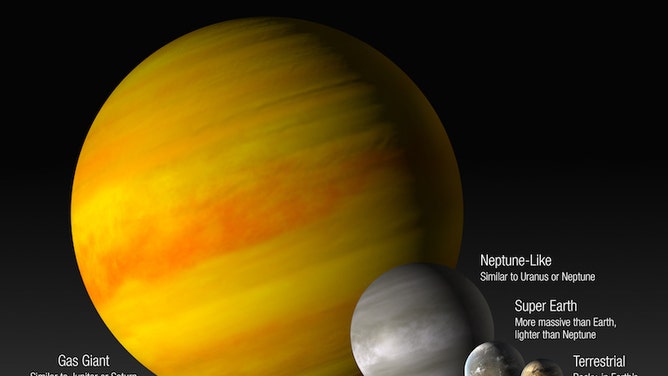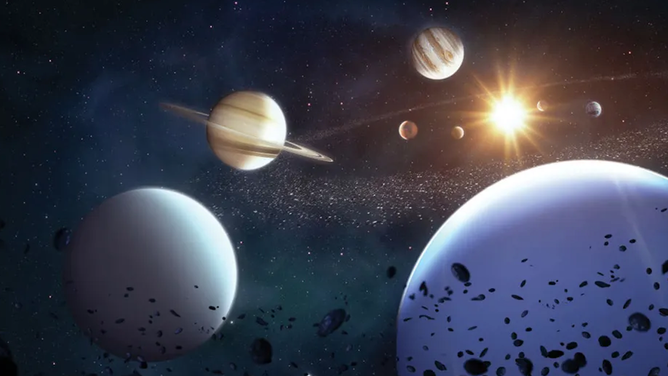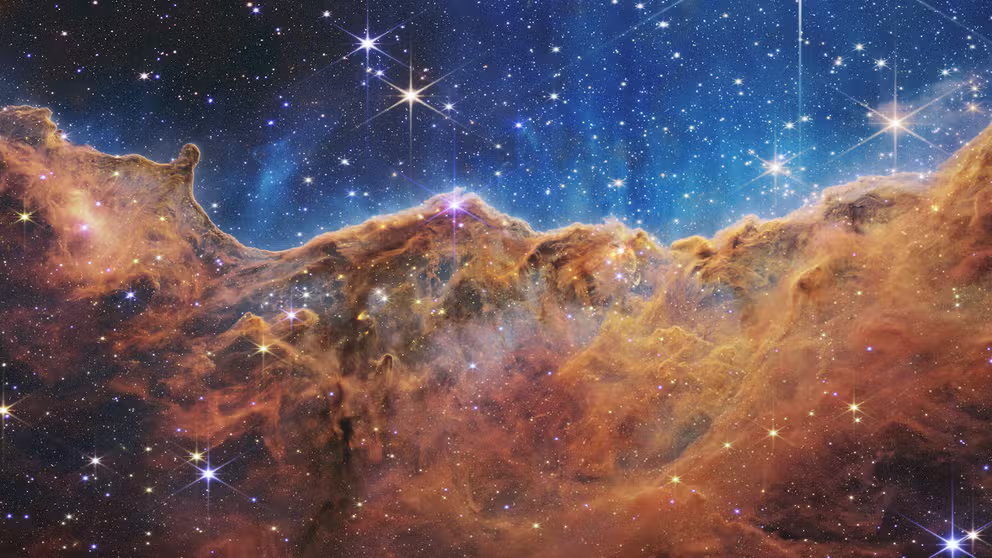Webb telescope uncovers mystery of 'mini-Neptune' and its atmosphere
The amazing discovery suggests that this mini-Neptune might have started out a "water world" planet, similar to Earth's beginnings. Could it have been habitable at some point?
Incredible images from James Webb show the universe like never before
As the world's premier space science observatory, the James Webb Space Telescope is giving us glimpses into distant worlds like never before.
Scientists just learned a secret of the universe when they were able to analyze the atmosphere of a distant planet thanks to the James Webb Space Telescope.
"It’s the closest look yet at the mysterious world, a "mini-Neptune" that was largely impenetrable to previous observations," NASA said.
The glimpse gives astronomers another clue about what planets were, are and will be habitable in the universe and multiverse beyond.
"The planet is totally blanketed by some sort of haze or cloud layer," said Eliza Kempton, a researcher at the University of Maryland and lead author of a new paper published in Nature. "The atmosphere just remained totally hidden from us until this observation."
What surrounds a mini-Neptune?
This mini-Neptune is a mystery of a planet, smaller than Neptune but super-Earth or bigger than Earth. A NASA statement called this planet GJ 1214 b that likely has a highly reflective world with a steamy atmosphere.
WEBB REVEALS GALAXIES IN EXQUISITE DETAIL

This artist’s concept depicts the planet GJ 1214 b, a "mini-Neptune" with what is likely a steamy, hazy atmosphere. A new study based on observations by NASA’s Webb telescope provides insight into this type of planet, the most common in the galaxy.
(NASA/JPL-Caltech/R. Hurt (IPAC) / NASA)
These mini or sub-Neptune planets are the most common type of planet in the galaxy, but we don’t have any within our solar system to study, explained NASA. Researchers felt they were a small version of Neptune.
"It is the first super-Earth around which an atmosphere has been found," writes NASA. "The exoplanet, orbiting a small star only 40 light-years away from us, thus opens dramatic new perspectives in the quest for habitable worlds."
Like Neptune but different
The huge icy planet, Neptune, is fifth from the sun or 30 times further away from the sun than the Earth. It is four times the size of Earth and 17 times Earth’s mass, according to NASA. The atmosphere is thought to be comprised of hydrogen and helium, while rock; heavy metals and frozen water, ammonia and methane make up the planet. But this mini-Neptune has a few quirks and differences, starting with the atmosphere.
IF NEPTUNE'S ORBIT MOVES 0.1%, IT COULD DESTABILIZE THE ENTIRE SOLAR SYSTEM, STUDY SAYS

Exoplanets, planets beyond our solar system, whether orbiting other stars or floating freely between them, can make the planets closer to home look tame by comparison. "Hot Jupiters" are star-hugging, infernal worlds. "Super-Earths" are super mysterious. Frozen planets, gas giants that make Jupiter look puny, or small, rocky planets in Earth’s size range but in tight orbits around red dwarf stars – the catalog keeps growing.
(NASA-JPL/Caltech / NASA)
Today’s GJ 1214 b is too hot for humans and most likely evaporates any surface water. But, Kempton told NASA that the planet was not as hot as expected thanks to the atmosphere.
The telescope found day and night temperatures ranged from 535 to 326 degrees Fahrenheit. She told NASA that the planet’s atmosphere would need to be covered in heavier molecules like water or methane instead of light elements like hydrogen. Unfortunately, methane and water vapor look similar via Webb’s images.
"This is not a primordial atmosphere," she said. "It does not reflect the composition of the host star it formed around. Instead, it either lost a lot of hydrogen, if it started with a hydrogen-rich atmosphere, or it was formed from heavier elements to begin with – more icy, water-rich material."
WHAT ARE THE 5 LAYERS OF OUR ATMOSPHERE?

Illustration of the solar system viewed from beyond Neptune, with all eight planets visible around the sun.
((Tobias Roetsch/Future Publishing / Getty Images)
LONELY NEPTUNE'S RINGS SHINE BRIGHT IN JAMES WEBB SPACE TELESCOPE IMAGES
A study claimed that forming Earth was a "water world," and oceans 3 to 4 billion years ago held twice as much water. The flood could have started plate tectonic movement.
Another surprise to researchers, according to Kempton, was the unusually shiny atmosphere. The haze and clouds reflect many of its own sun’s rays into space instead of absorbing them.
Kempton told NASA that the study suggests that the planet formed away from its host star and gradually spiraled closer.
What is the James Webb Space Telescope?
According to NASA, the JWST sees the universe using infrared radiation, a form of light that we feel as heat and is invisible to human eyes.
Study authors want to analyze other mini-Neptunes with the telescope to build a consistent theory.
"The James Webb Space Telescope is the world’s premier space science observatory, wrote NASA. "Webb will solve mysteries in our solar system, look beyond to distant worlds around other stars, and probe the mysterious structures and origins of our universe and our place in it."

